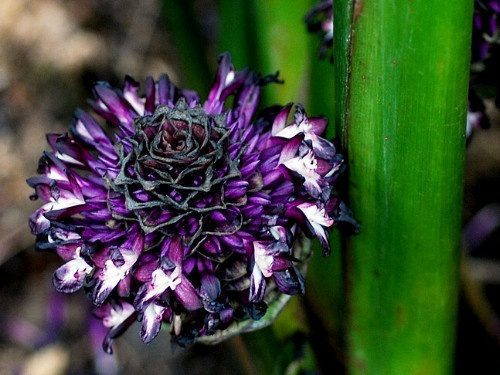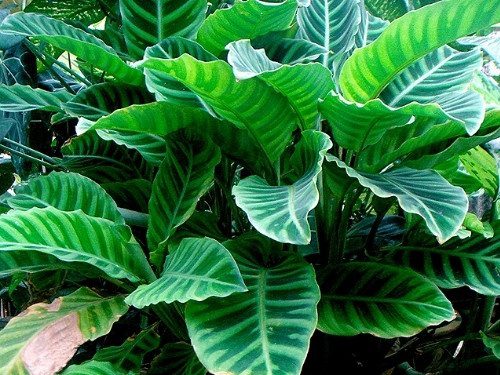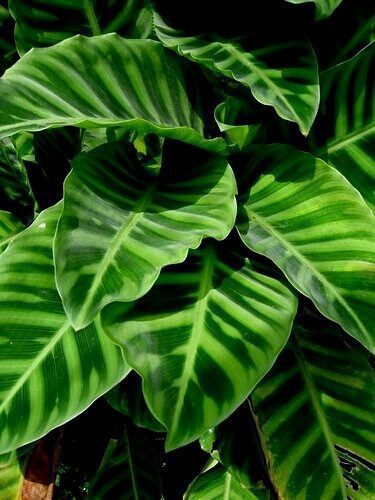The zebra plant, scientifically known as Goeppertia zebrina, is an herbaceous, perennial, rhizomatous, clumping ornamental species with distinctively striped foliage reminiscent of a zebra’s coat pattern. Native to the Atlantic Forest in southeastern Brazil, it flourishes beneath the canopy of trees. The leaves of the zebra plant are green, leathery, oval, elliptical, velvety, reaching up to 19.7 inches in length.
They feature prominent dark green spots against a light green background, creating contrasting stripes. Long petioles, which can grow up to 11.8 inches, support the leaves. The plant produces spike-like inflorescences in the spring on short stems emerging directly from the rhizome. These inflorescences bear beautiful, enduring purple flowers that remain hidden beneath the foliage.

With its ornamental foliage, the zebra plant is perfect for enhancing indoor spaces, creating an atmosphere of luxury and tropical flair. It serves as an excellent option to introduce vibrant colors to your environment, as its striped appearance illuminates the leaves. Additionally, its velvety texture sets it apart from other houseplant species. When cultivating it in pots indoors, it’s essential to place it in locations receiving either southern-facing light or filtered light, such as through translucent curtains. Its striking appearance makes it an ideal focal point, earning its place as a decoration centerpiece with its seemingly hand-painted foliage. The leaf patterns resembling zebra stripes might even capture the interest of children.
Moreover, due to its preference for diffused light, it’s suitable for bathrooms, kitchens, winter gardens, and powder rooms, as long as they receive ample natural light. Furthermore, it can be used extensively as border plants in shaded areas near walls or buildings, as well as in planters adorning condominium entrances or business premises. In outdoor gardens, use it as ground cover under tree canopies, protecting it from direct sunlight and frost. Maintenance is straightforward, involving the removal of yellow and dry leaves, along with replanting in spring every 2 or 3 years.

It should be cultivated in filtered light or partial shade, as direct sunlight can lead to leaf burns. Overall, the zebra plant is an easy-to-grow and undemanding species. It thrives in warm and humid climates, tolerating temperatures between 61 to 75°F (16 to 24°C), with around 68°F (20°C) being ideal. During dry spells, consider using an electric humidifier or water trays to supplement air moisture.
The substrate can consist of potting soil and organic compost, with proper drainage. Regarding watering, the zebra plant requires regular watering, ideally when the soil surface is dry, especially increasing in the warmer months. Avoid using chlorinated water for watering, as it can lead to brown edges and a burnt appearance on the leaves. The goal is to keep the soil consistently moist but never waterlogged. As for fertilization, apply it directly to the substrate during spring and autumn, preferably with organic or slow-release fertilizers, following the manufacturer’s recommendations. Propagation of the zebra plant should be done by dividing the clumps in spring, ensuring each new plant has a portion of rhizome, roots, and leaves.


